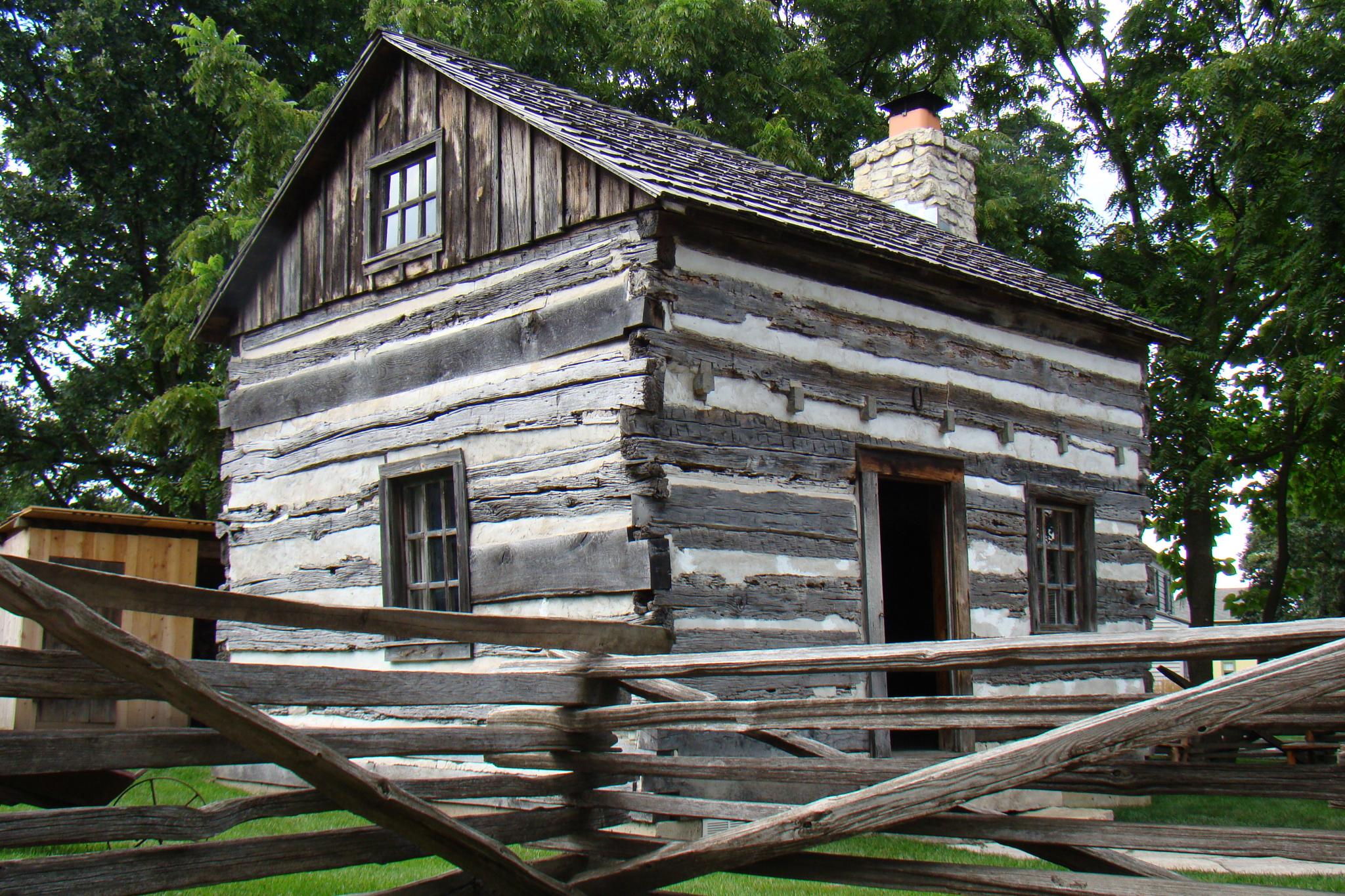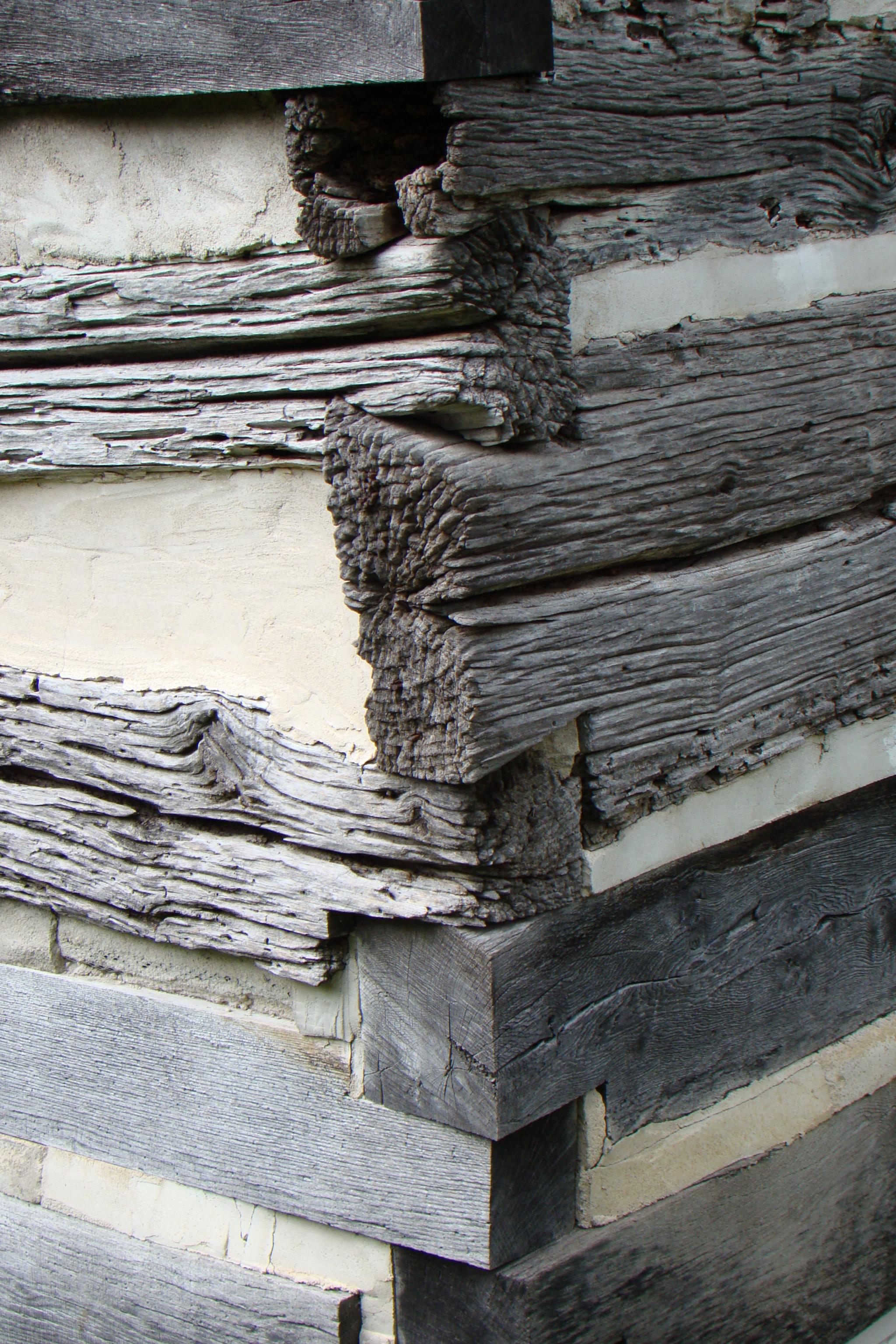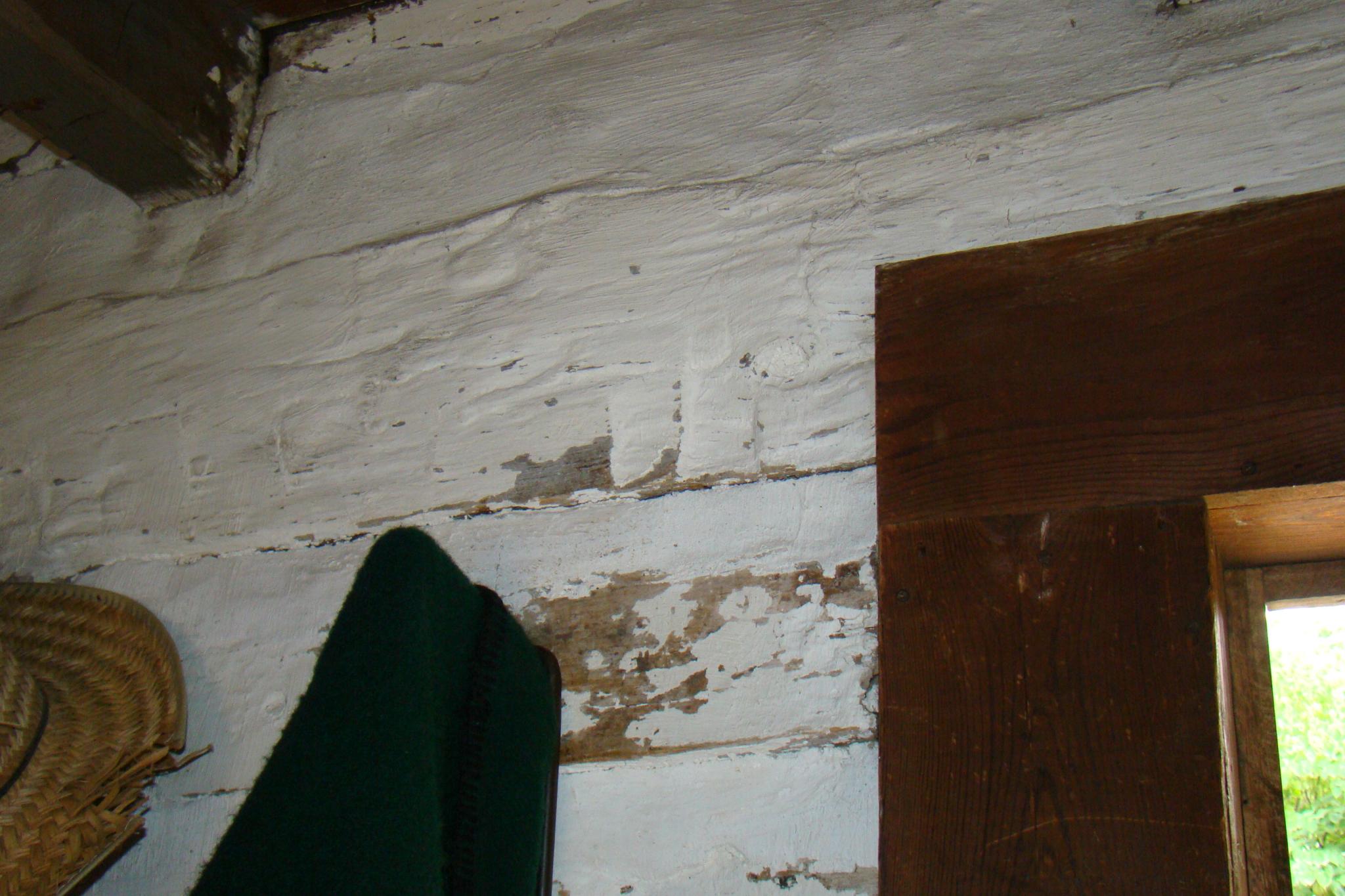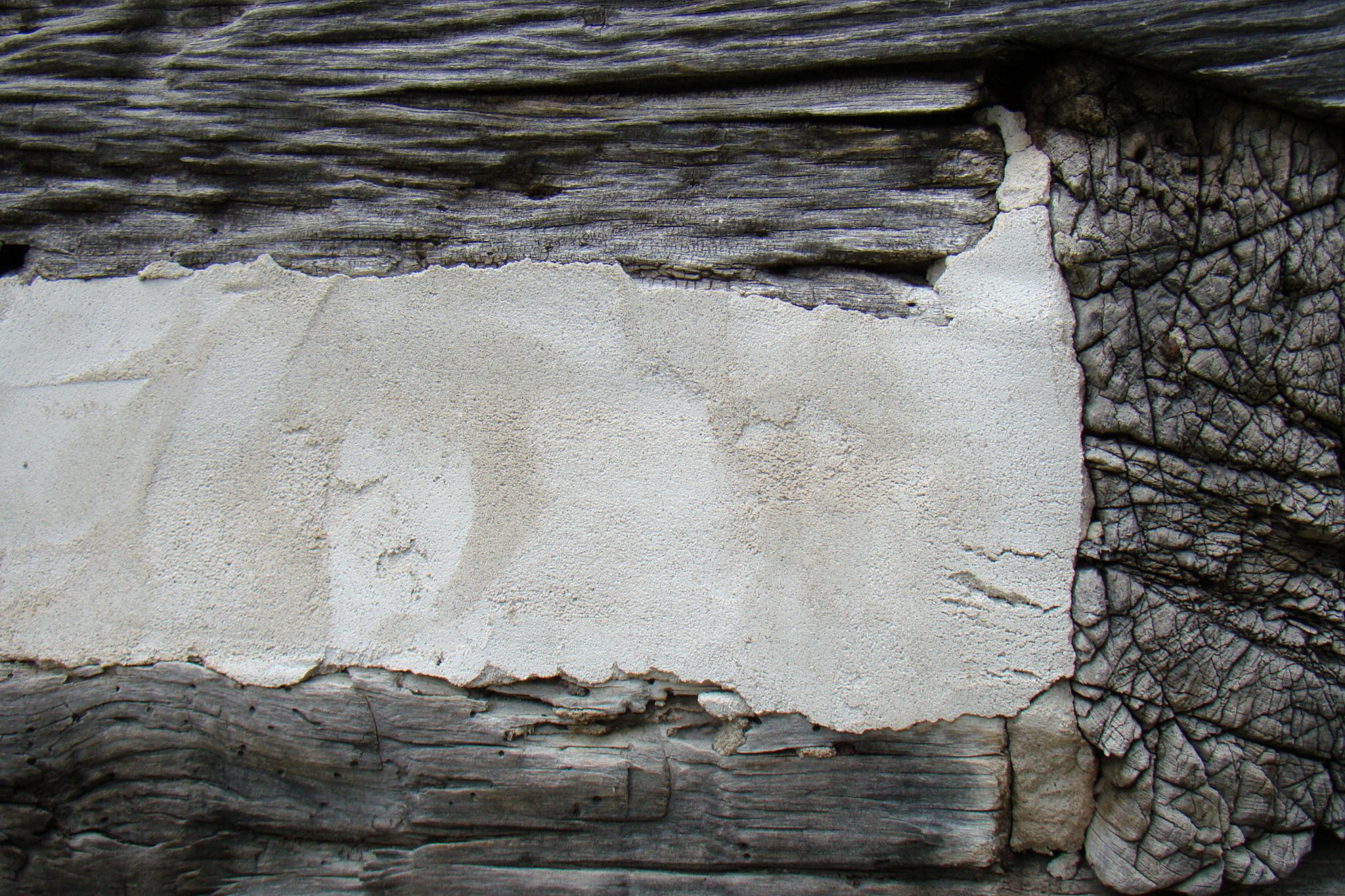
Log House

Log House notched corners

Whitewashed Log House interior

Chinking on exterior of Log House
Log homes were settlers’ first residences when they arrived at their destination on the prairies. Swedish and Finnish colonists settling the Delaware Valley in Pennsylvania brought the style to America in the 1630s. Log homes could be built of either hewn (cut and shaped) or unhewn (left whole) logs. After cutting, builders made notches in the logs so they could easily form the corners of the structure. Notches held logs in place and eliminated the need for nails or pegs. However, it was difficult to expand a log home because the stability of the structure depended on the corner joints the notches formed. Clay or other materials filled gaps between logs. This process, known as chinking, weatherproofed the exterior walls. As a finishing touch, the walls inside the home were “whitewashed” using a mixture of crushed limestone and water, helping to brighten the room and making it easier to clean soot and dirt from the wood-burning fireplace off the walls. The finished product was a log home any early settler could be proud of, at least temporarily - until they built a larger frame house like those they lived in back East.